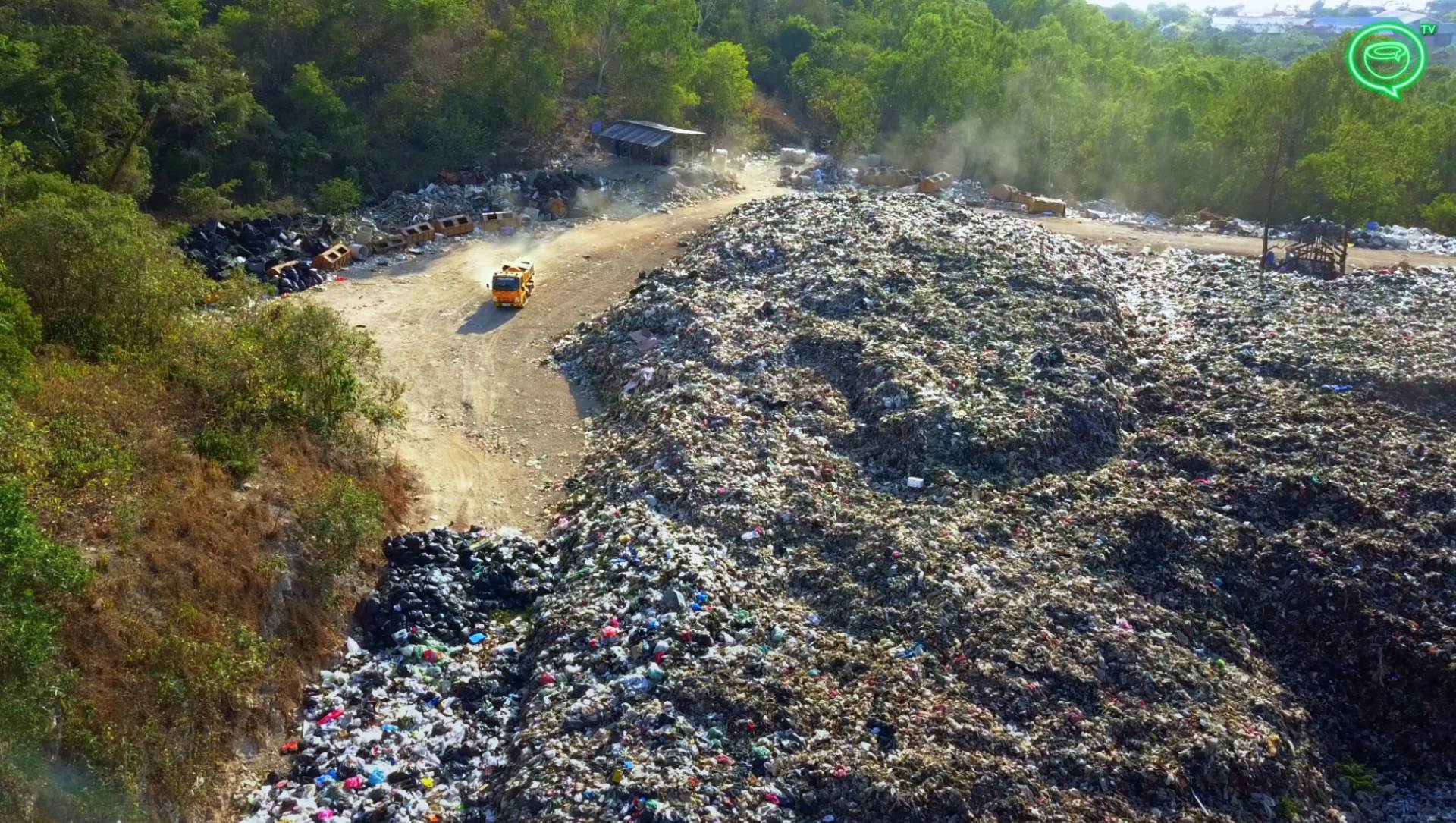The smell smacks you in the face like a cartoon rake from a solid 200-meters away. Usually, you smell it from further out than that, depending on the direction of the wind.
The “great” Koh Lan landfill, which sprawls over 2 hectares on one of Thailand’s most beautiful islands, is home to over 50,000 tons of reeking, rotting trash that’s slowly accumulated over six years.
Most garbage dumps don’t have a listing on Google Maps. This one does.
Its very existence, activists and local residents say, is a testament to the lack of waste management solutions being offered by the government. And as the sixth-largest contributor of ocean plastic pollution in the world, Thailand is desperately in need of solutions.
While responsible for the deaths of hundreds of birds and fish every year, the issue was dramatically underscored in June, when a dead whale washed up in a canal in Songkhla province with more than 80 plastic bags in its stomach.
Since then, the kingdom’s waste management has been under a fresh international microscope, and with good reason, argues Greenpeace Southeast Asia director Tara Buakamsri.
Thailand, he says, is coming “to the end of this street.”
“We see the fault in our waste management system manifest in our water sources and how it hinders the livelihood of communities that live near the trash landfills or trash disposal [sites],” he told Coconuts Bangkok in a recent interview.
Not only their livelihoods, but their health.
Check out Coconuts TV’s accompanying video about Koh Lan’s landfill:
A bad system
Thailand produces about 27 million tons of waste per year, with 2-3 million of that in the form of plastic, said Tara, quoting statistics from the Thai Ministry of Natural Resources and Environment.
Of that plastic waste, only 0.5 million tons are reused or recycled, while the rest finds its way to landfills or the ocean.
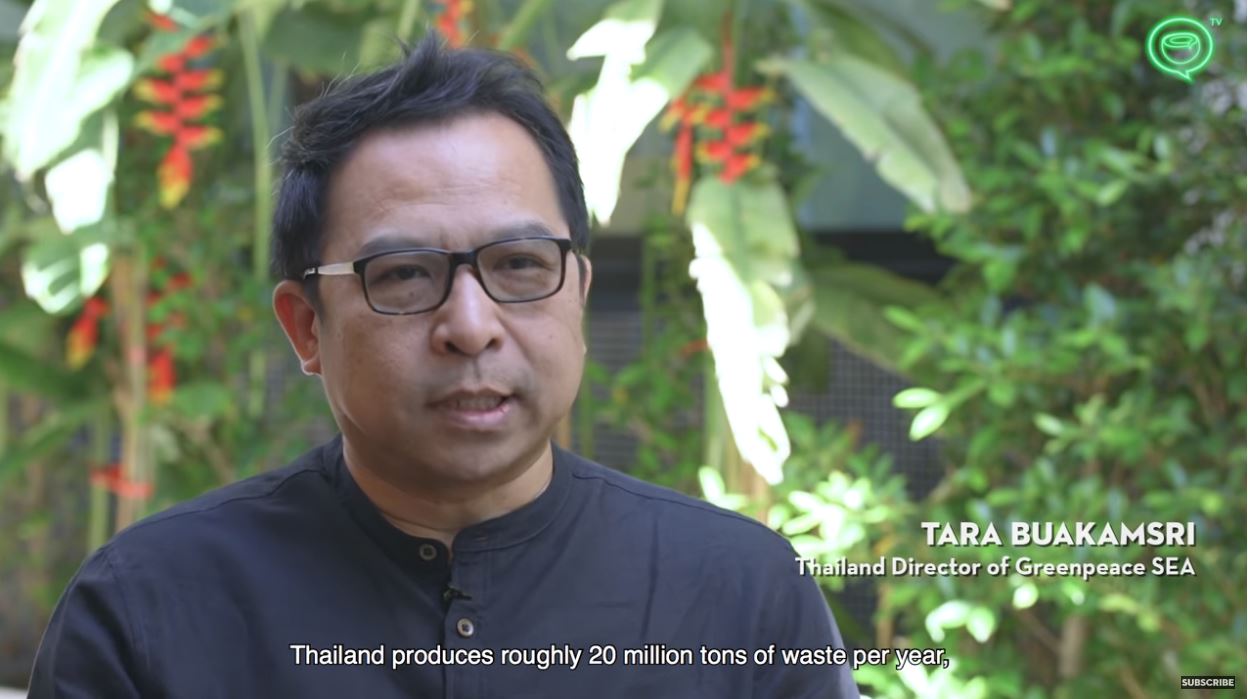
“Though most plastic can be recycled, our system of garbage collection and management is so terrible that our plastic trash doesn’t reach the recycling process as much as it should,” he said.
“In Thailand, there are only two main ways to manage waste, which is by either burying it or burning it. The most popular way is finding land to bury it, because [that] is cheap and easy.”
Out of the country’s 2,490 waste management sites, just 19 percent is properly managed, according to a 2014 study by the government’s own Pollution Control Department (PCD), with “properly managed” meaning the implementation of basic safety measures like the prevention of air and water contamination.
Unfortunately, the remaining 2,024 sites are at the mercy of illegal dumping – including of hazardous waste – fires, and seepage into nearby land and water systems.
The 50,000-ton rotting Koh Lan landfill
When Coconuts Bangkok visited the mammoth dump on Koh Lan earlier this month, little could have prepared us for the decaying monstrosity we found.
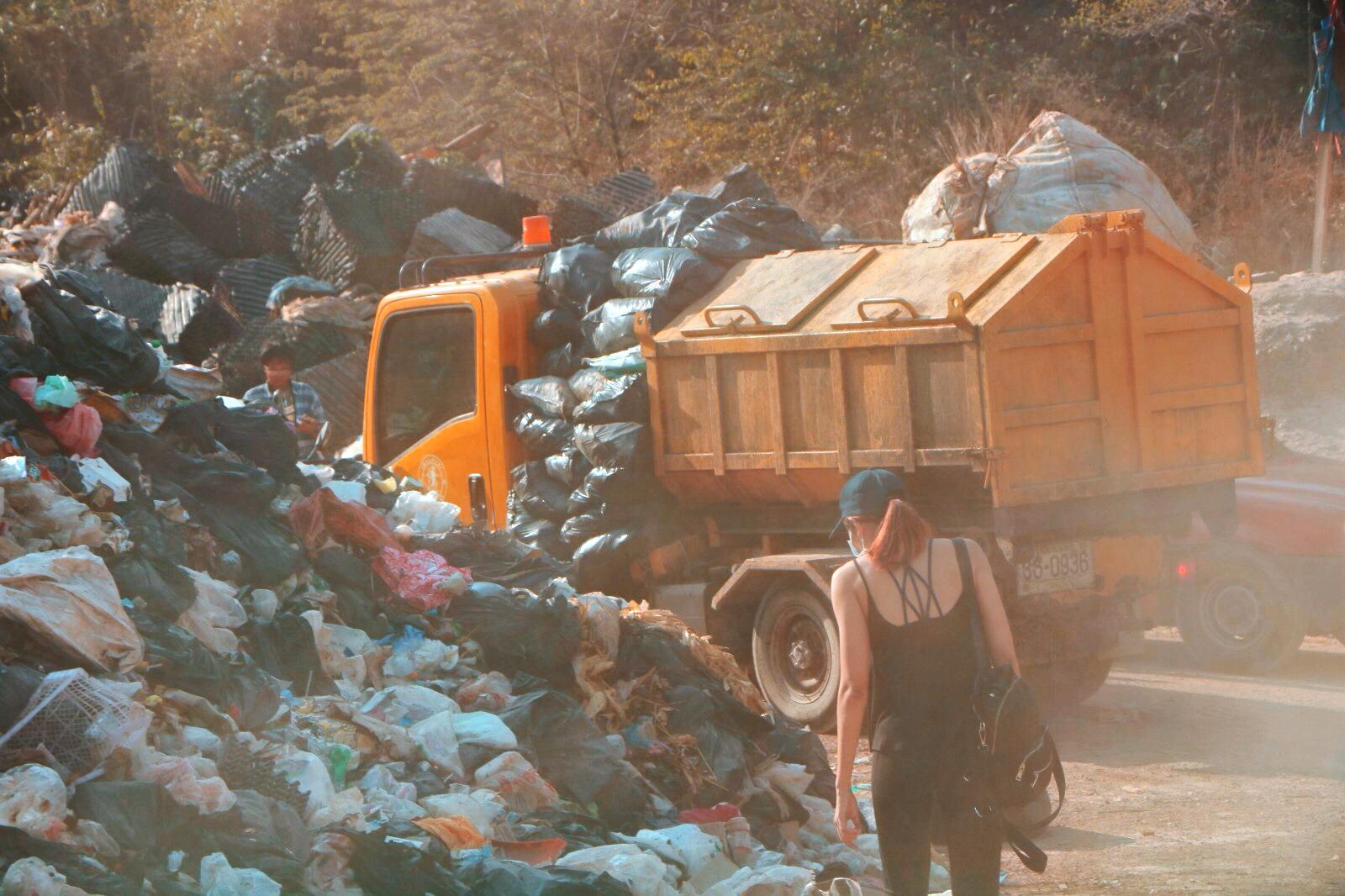
As we walked through the site, even those of us who have stubbornly refused to don masks during Bangkok’s ongoing air pollution crisis were forced to purchase them — to combat not just the fumes, but also the flies trying to crawl into our mouths.
Everything from purses, teddy bears, and bicycles to beer bottles, plastic bags and worn-out furniture have been haphazardly tossed into what has become a mountain range of waste.
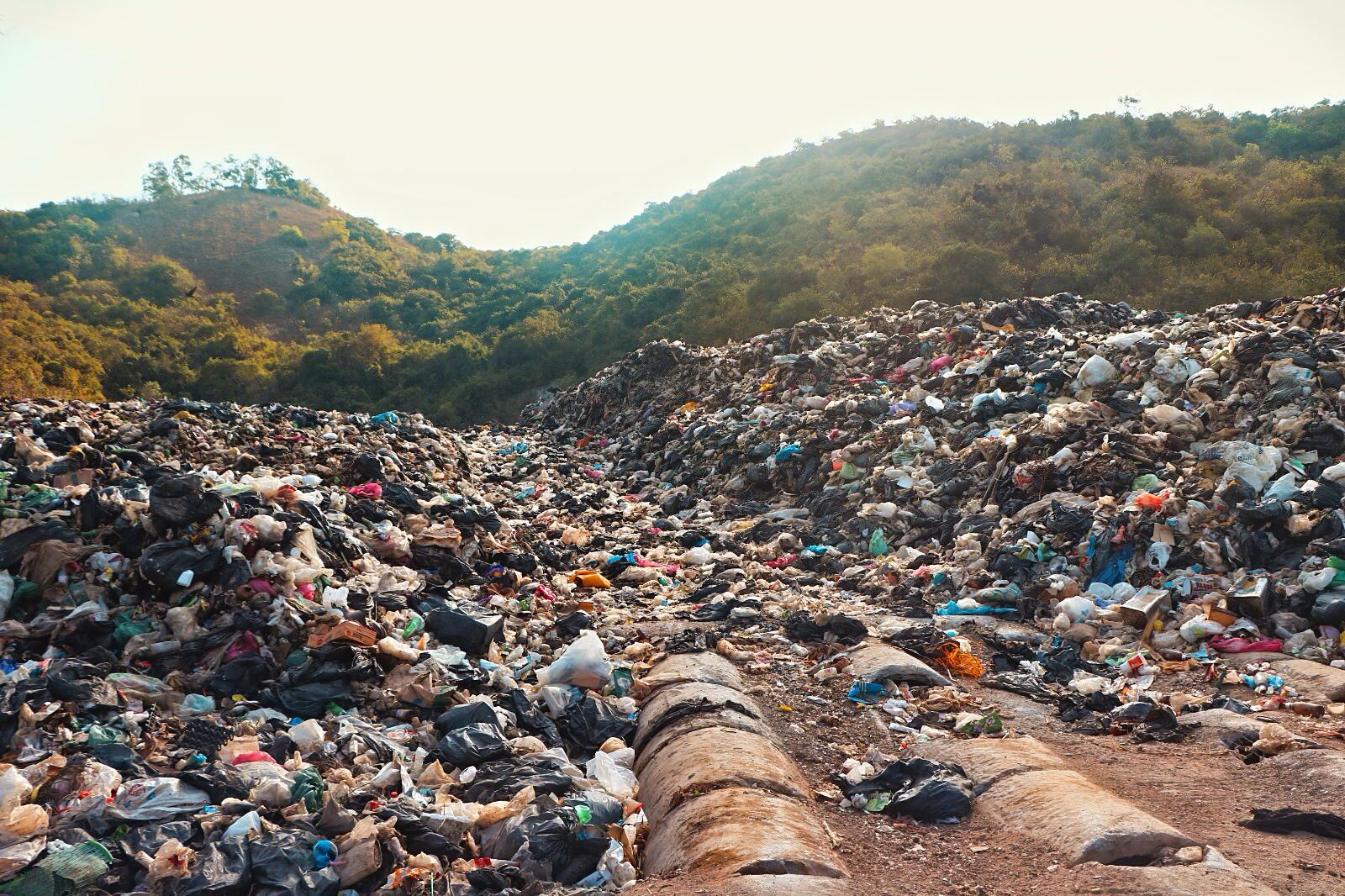
On closer inspection, maggots can be seen flourishing in the liquid waste that’s leaked out from underneath the pile. Unmanaged waste like this, often toxic, can also penetrate the surface, contaminating the community’s groundwater.
In 2014, the Health Impact Assessment Coordinating Unit of the National Health Commission Office of Thailand revealed that illegal dumping sites are one of the three major causes of contamination.
For example, the groundwater near an illegal dump in Nakhon Ratchasima province’s Klang Dong district was found to be contaminated with trichloroethylene up to 600 times the standard.
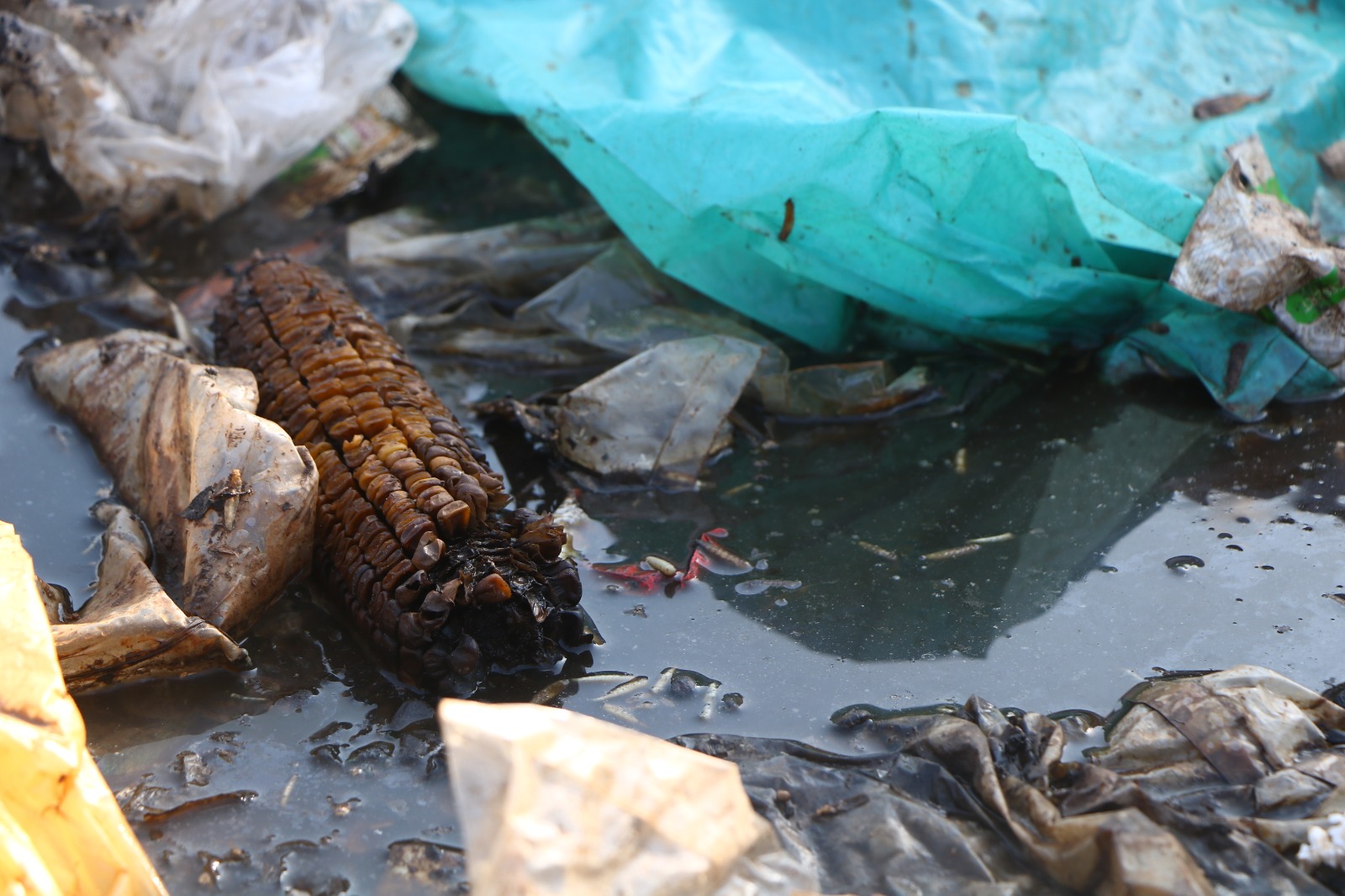
Short-term exposure effects to trichloroethylene include liver damage, dizziness, and even death. Long-term effects include scleroderma (a systemic autoimmune disease), decreases in sex drive, sperm quality, and reproductive hormone levels.
Koh Lan, which welcomes up to 10,000 tourists a day to its beautiful beaches, wasn’t always like this. At one point, waste from the island was being shipped to Pattaya for disposal via a cargo ship, but in 2013, that ship broke down.
“That year we didn’t have a place to dispose of our trash, so the landfill was created,” acting chief of the Pattaya Municipality branch office on Koh Lan Nattaphon Thirawutthiwet told us in a recent phone interview.
When officials later tried to hire ships to remove the trash from the massive landfill and on to mainland Pattaya, the Interior Ministry ordered officials to change the plan and issued a “recommendation” that all trash be disposed of in the area where it is generated.
Because of this, all of Koh Lan’s trash — both from the local community as well as from tourists — now ends up here.
“It (the landfill) started as a water reservoir, but due to bad planning, water kept evaporating, so instead the city decided to dedicate the land to be a dump,” explained Pornchai Peugsaard, a local restaurant owner and official representative of Tien beach.
Pornchai told us that he and other restaurant owners pay a monthly fee of THB600 (about US$19) to island authorities to have their trash collected and taken to the landfill.
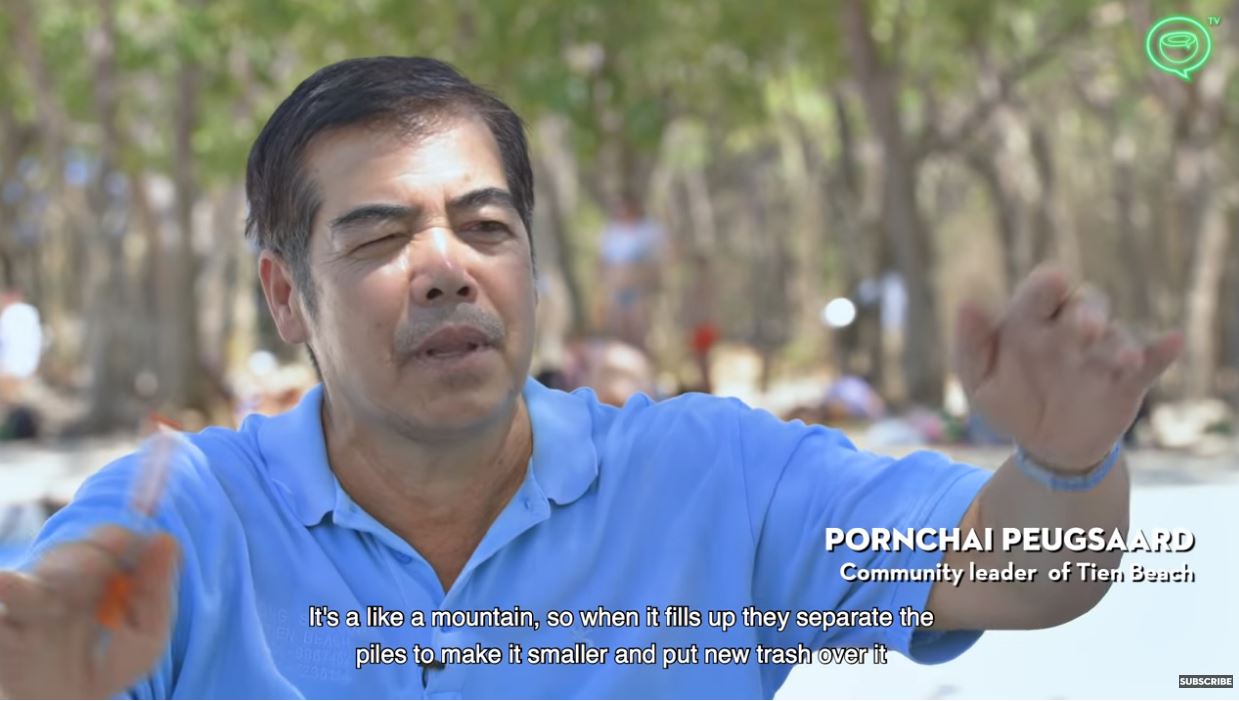
Some locals told us that the effects of the rotting pile have taken a toll on their business.
“In the winter if there’s no wind, the smell covers the beach. Sometimes flies come too, and they’re all over,” said Anan Puttha, a restaurant owner from Samae Beach that’s just 700 meters from the landfill.
He added that local officials offered only Band-Aid solutions – like odor repellent sprays — when he reported the problem to them.
“So many customers ask me about the smell, I don’t know what to tell them,” he said.
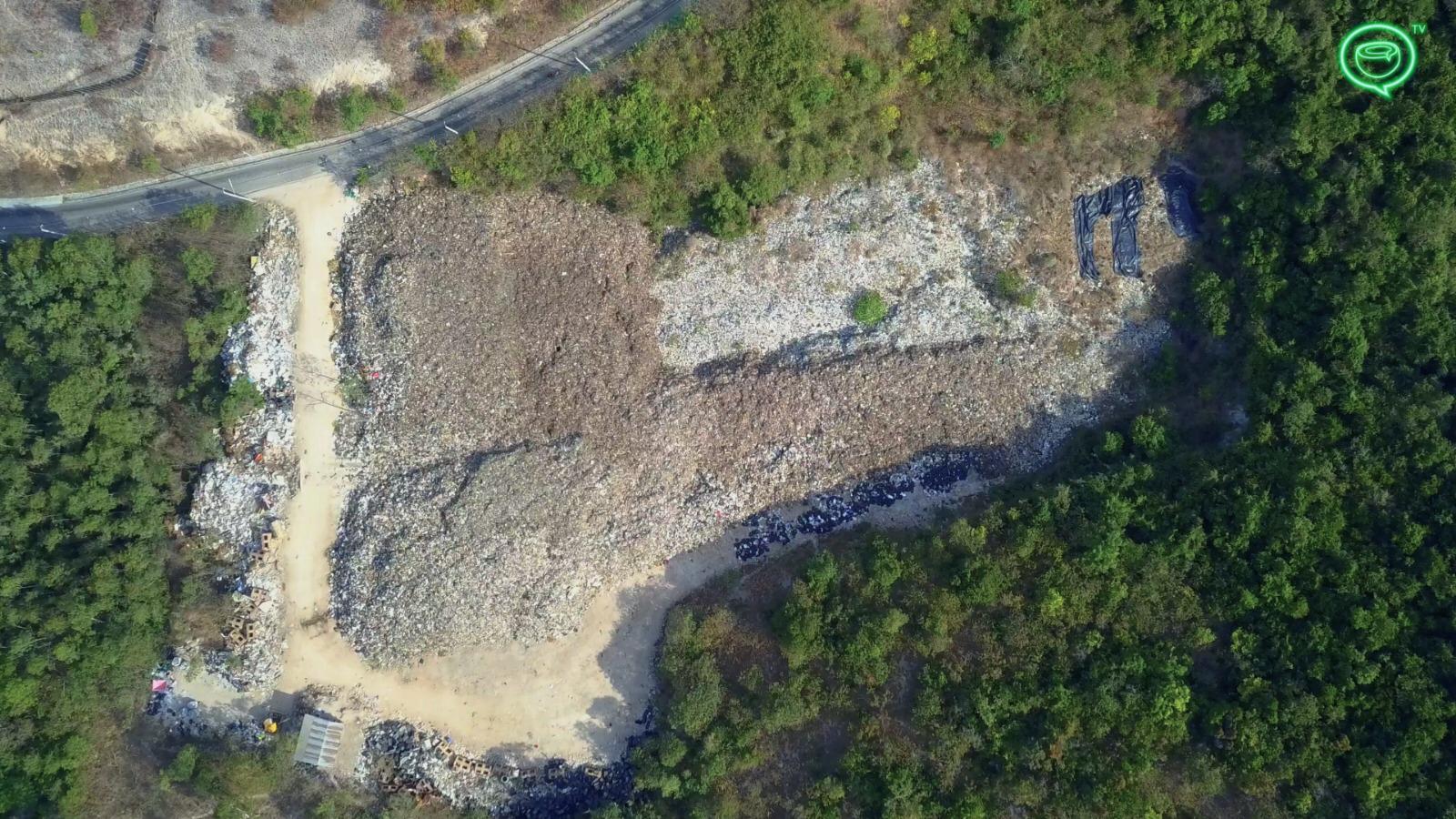
But while owners are fixated on the smell and its effect on business, experts warn that’s the least of their worries, calling dump sites like Koh Lan’s a “ticking time bomb for the environment” and for the communities forced to co-exist with them — as can be exemplified by the eight-day fire that happened in 2014 (more on this later).
In recent years, a growing body of research suggests that the toxins and chemicals used in plastic have a direct correlation with health issues affecting everything from reproductive abnormalities and cancer to birth defects, immune system problems, and childhood developmental issues.
When the ticking stops
In March of 2014, a ferocious eight-day fire broke out amid six million tons of putrefying trash and toxic effluent on a dump site on the outskirts of Bangkok.
Children, seniors, people with respiratory problems, and, well, anyone who didn’t want to breathe air filled with carcinogenic fumes were advised to leave the area as the air in the sub-district of Samut Prakan province began filling up with dangerous chemicals like sulfur and carbon monoxide.
About 1,200 residents were affected during the 2014 fire, according to the Public Health Ministry, with most suffering skin, eye, and breathing problems.
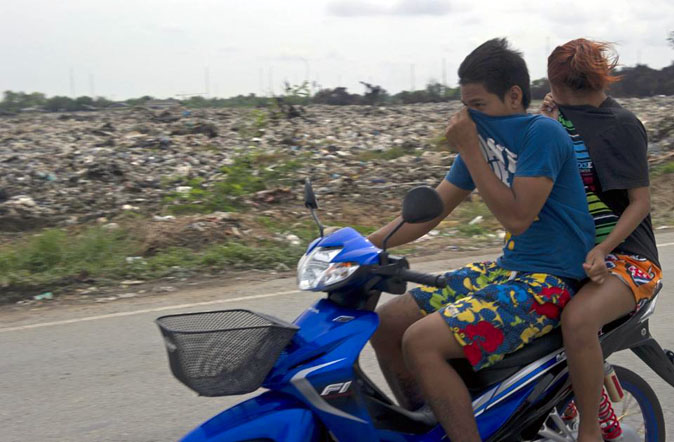
Just a few weeks later, another fire started at the exact same landfill since the first one was never fully extinguished.
That same year, the Pollution Control Department reported that 2.65 million tons of hazardous waste had been produced in 2013 alone — about 2.04 million from industrial activity, with the rest coming from households.
At the time, the PCD predicted a growing problem with the disposal of electronic equipment like televisions and laptops, air-conditioners, mobile phones, and refrigerators.
According to Pichaya Rachdawong (PHD), deputy head of the Department of Environmental Engineering at Chulalongkorn University, the kingdom’s landfill management is still haphazard because it’s not a clearly established sector.

“The central government lays out the guidelines for waste management, but it is the local government that directly deals with the problem,” he recently told Coconuts Bangkok in a phone interview.
“And the statistics show that local authority does not have enough manpower nor funding to deal with such a big problem. They have very limited resources.”
“Koh Lan is not like Bangkok, where there’s about 10,000 officials working in waste management. There are maybe only a couple of hundred in Koh Lan,” he said.
Pichaya believes it would be more effective for the central government to specify the methods of waste management for popular tourist destinations like Samui, Phuket, or Koh Lan since the scale of the crisis is too large for local officials to handle.
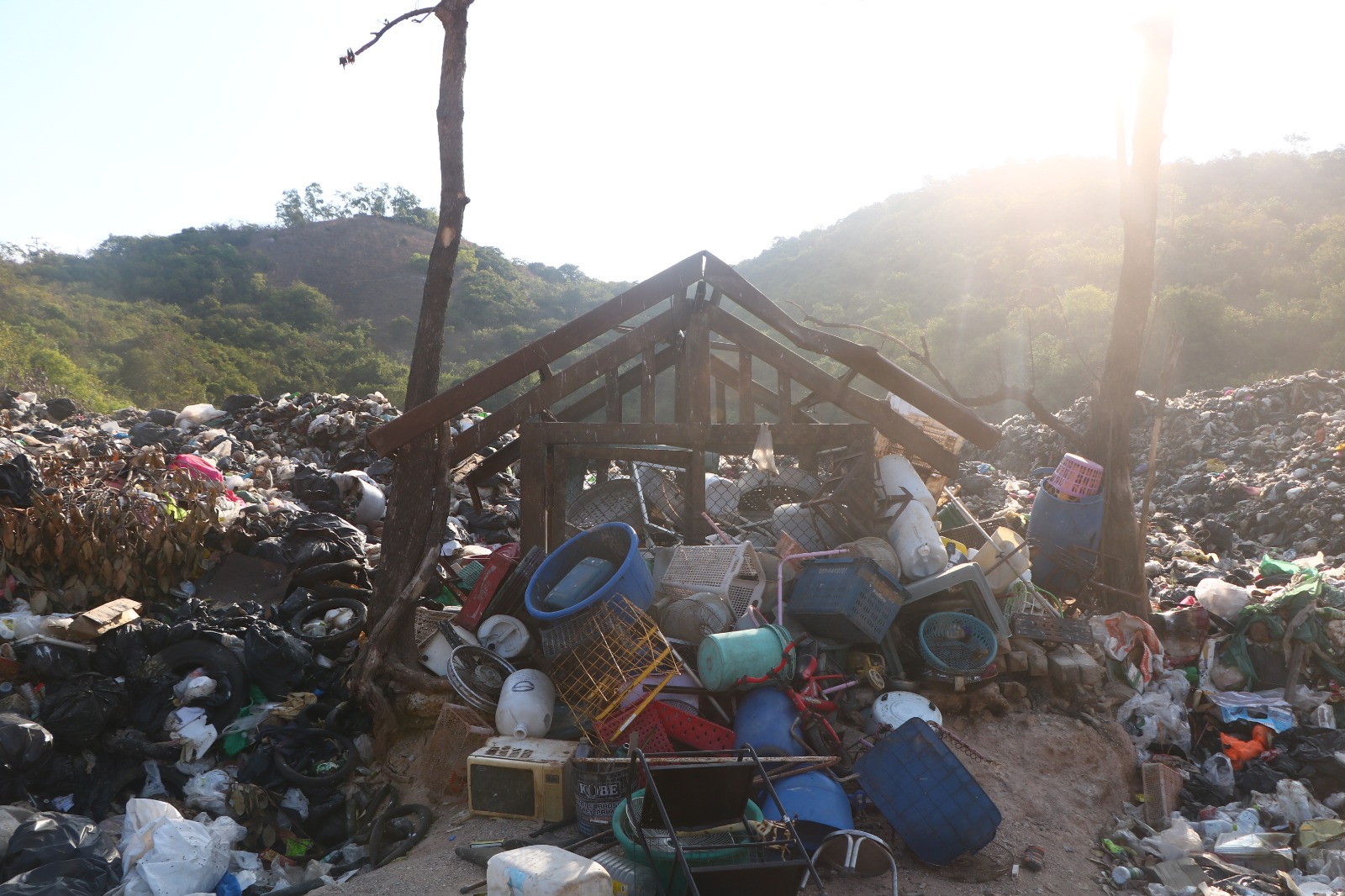
Unfortunately, garbage dump fires are not unusual in the kingdom’s landfills, with the PCD report stating that about 10 erupt every month across the kingdom, leaving residents without the means to relocate to deal with the contamination and its side effects.
Difficult solutions
But, solutions don’t come easily.
Five years ago, the Pattaya City Council allocated THB95 million (about US$3 million) to Koh Lan officials to transport the 500,000 tons of trash from their island to be disposed of in Rayong, explained Nattaphon Thirawutthiwet, acting chief of the Pattaya Municipality branch office on Koh Lan.
However, the island’s authorities were not able to obtain permission from the Interior Ministry to transport the garbage across provinces, due to a law passed in 2017 that restricts such transfers, he said.
Since local officials could not come up with a method to get rid of the trash on the island, they were instructed to return the THB95 million back to Pattaya in February.
When the two restaurant owners we spoke to were asked about this, they both said the community couldn’t agree on an alternative to the landfill, so no decision could be made — and therefore, no further action could be taken.
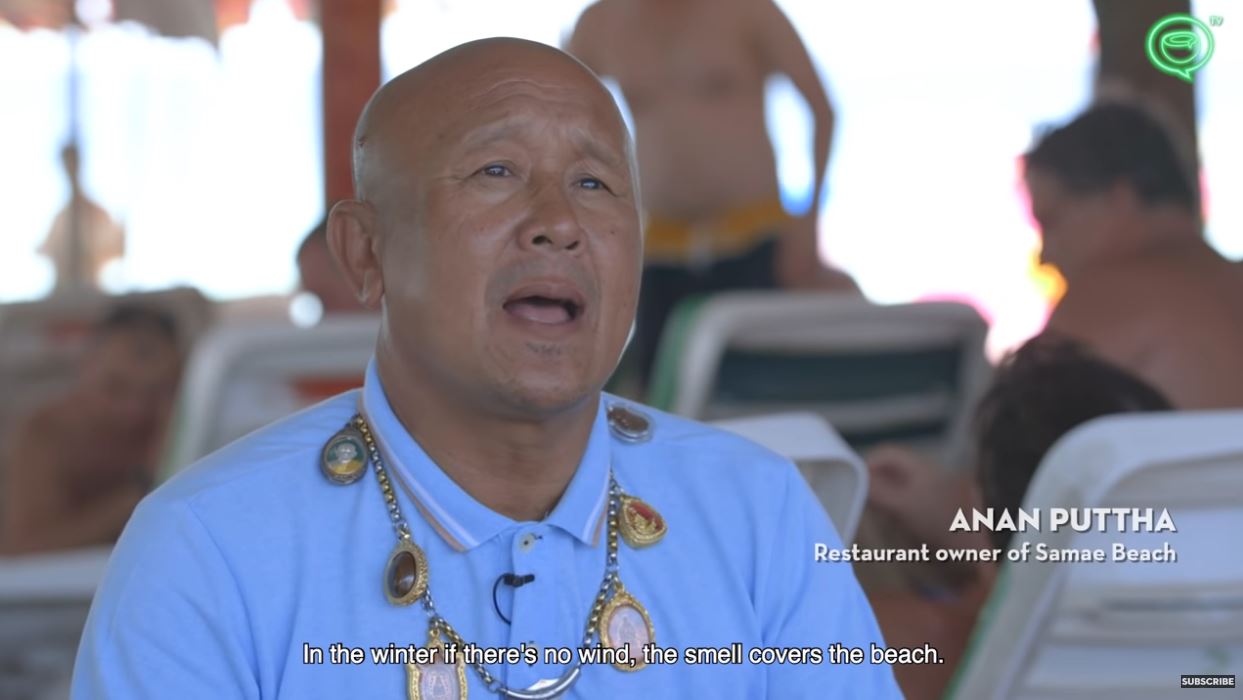
Pornchai said the city was considering purchasing an incinerator, though many residents were concerned about the potential air pollution this would cause. Anan, meanwhile, had also heard talks of simply covering up the dump.
“But people can’t agree, so nothing moves forward,” he said.
But a new hope may be dawning, according to Nattaphon, who told us that a new budget had just two weeks ago been approved by the new Pattaya mayor to plant trees to reduce toxins, build a wall around the landfill and bring a massive tarp to cover the existing trash pile.
“We are also conducting research about what incinerator we can obtain in order to burn the trash in the most environmentally friendly way.”
The source
For Greenpeace’s Tara, all of these ideas show that authorities are ignoring what he believes is the real issue: Thailand’s over-consumption of plastic.
“We can only solve the problem by going directly to the source,” he said.
“We must develop a strategy or incentive for everyone in the community to make an effort by changing the way we interact with plastic in our daily lives.”
Studies show that, on average, Thais use eight plastic bags per day, which adds up to a whopping 200 billion bags consumed per year.
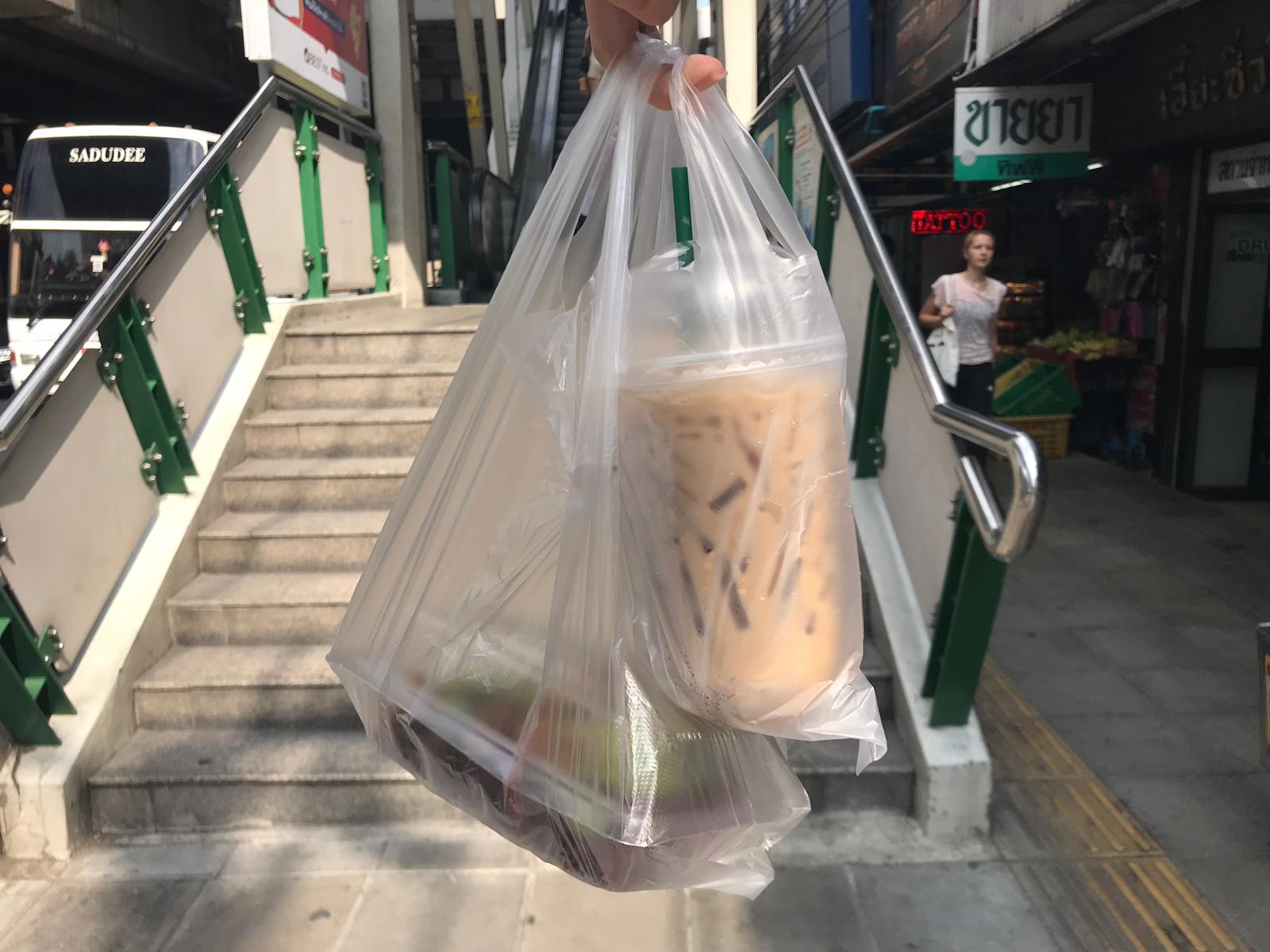
“No bag, please,” is not a phrase you’ll often hear at supermarket checkouts or in street vendor transactions in this country. But it should be, given the amount of roadside fruit that’s double-bagged; the number of iced coffees that come with a plastic handle; the orange soda served on ice out of a plastic bag; or that single pack of gum the 7-Eleven cashier won’t hesitate to bag.
There’s a popular joke in Thailand: “I’d like a bag for my bag, please.” On a superficial level, it’s funny, but the growing detrimental implications this habit is having on our environment is anything but.
“There’s a prediction that by 2050, there will be more waste in the ocean than there are fish if we carry on producing waste the way we do,” Tara said.
Unless we make changing our own habits a priority, and quickly, Tara believes the devastating consequences of plastic consumption – from towering trash mountains to washed-up whales — will be the sad legacy we pass on to the next generation.
Additional reporting by AFP.
